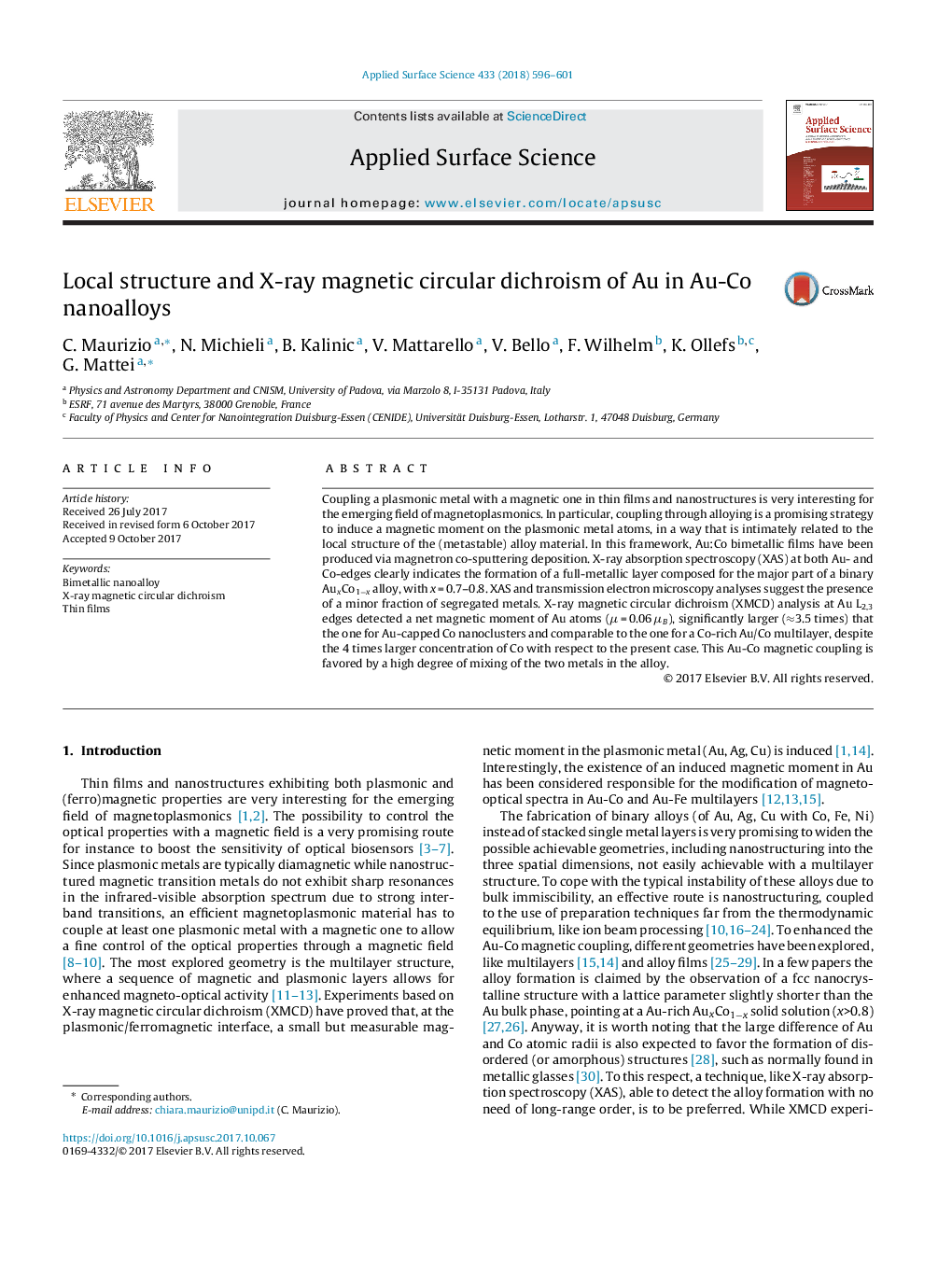| Article ID | Journal | Published Year | Pages | File Type |
|---|---|---|---|---|
| 7836525 | Applied Surface Science | 2018 | 6 Pages |
Abstract
Coupling a plasmonic metal with a magnetic one in thin films and nanostructures is very interesting for the emerging field of magnetoplasmonics. In particular, coupling through alloying is a promising strategy to induce a magnetic moment on the plasmonic metal atoms, in a way that is intimately related to the local structure of the (metastable) alloy material. In this framework, Au:Co bimetallic films have been produced via magnetron co-sputtering deposition. X-ray absorption spectroscopy (XAS) at both Au- and Co-edges clearly indicates the formation of a full-metallic layer composed for the major part of a binary AuxCo1âx alloy, with x = 0.7-0.8. XAS and transmission electron microscopy analyses suggest the presence of a minor fraction of segregated metals. X-ray magnetic circular dichroism (XMCD) analysis at Au L2,3 edges detected a net magnetic moment of Au atoms (μ = 0.06 μB), significantly larger (â3.5 times) that the one for Au-capped Co nanoclusters and comparable to the one for a Co-rich Au/Co multilayer, despite the 4 times larger concentration of Co with respect to the present case. This Au-Co magnetic coupling is favored by a high degree of mixing of the two metals in the alloy.
Related Topics
Physical Sciences and Engineering
Chemistry
Physical and Theoretical Chemistry
Authors
C. Maurizio, N. Michieli, B. Kalinic, V. Mattarello, V. Bello, F. Wilhelm, K. Ollefs, G. Mattei,
